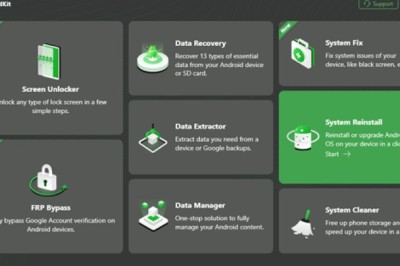views
There are plenty of excellent guides on branding in general, so this time we’re focusing on tips that are specific to small businesses. As a startup, your approach inevitably has to be different than that of an established company.
The brand as a person
The purpose of any brand boils down to establishing connections. You achieve that by humanising your company. Approach your branding as a character building quiz. What is your brand’s identity and its personality? What sort of experience does it provide to people who interact with it? Here’s what to consider.
Brand identity: who is this brand-person? If your brand was a living human, how would they introduce themselves? What would they look like? What impression would they give off?
Brand personality: how does your brand behave? Would they be a humorous or serious person? Neighbourly or professional? How would they talk about your product?
Brand experience: how is your brand remembered? What would people say about the brand-person after their first meeting?
As a bonus, account for regional and cultural sensitivities. Your brand persona is your ambassador, so it needs to cater to your target audience’s perception. For example, an all-round graphic design agency in Brisbane would tailor their brand to appeal to Australian ideas. A similar sort of business in Chicago would adapt their branding to the American cultural perspective.
Stick to one strategy
Brand strategy refers to specific goals and a long-term plan for achieving them. Common branding goals consider factors such as employee engagement, audience perception, competition, purpose, mission, and vision.
Your strategy needs to be flexible enough to let your brand evolve over time. As the market changes and trends come and go your brand will inevitably have to adapt. Keep your initial goals in mind, but don’t be rigid in your ways of getting there. Branding is, more than anything, continuous.
A good brand strategy will help you navigate that complex process with minimal friction. Have plans in place for handling crises and resolving predictable bottlenecks. At worst, if you have to rebrand in the future, have some safety strategies in mind to minimise the loss of audience that a dramatic change might provoke.
Be consistent
Whatever kind of brand you develop, commit to it in the long run. Switching styles and playing around too much will confuse and alienate your consumer base. It’s alright to make small adjustments at the outset, while you’re still figuring it out, but the sooner you consolidate everything, the better.
Your audience needs to be able to recognize your brand at a glance. This familiarity hinges on consistency. Homogenise your presence on all platforms and across any marketing mediums. This includes your visuals, slogans, key descriptions, and communication style.
One easy way to achieve this is to create a brand guidebook. It’s a document that outlines the rules and standards of your branding. Your guidelines define the brand palette, your logo, banners, signatures, vocabulary, keywords, and any other elements that make up your “ambassador persona”.
Originality is a tightrope
A big part of developing your own brand is taking inspiration from your competition. This can mean adopting their successful practices or zealously avoiding their failures. Proper competitive analysis is a precious source of branding insight, but also a double-edged sword.
It’s easy to get caught up in what rival brands are doing. You keep reacting to others instead of doing your own thing, and it can show in two ways:
● You become an imitator. Your branding is too similar to one or more successful competitors. You‘re too focused on strategies that are proven to be successful, so you never take risks. Your brand comes across as bland, unimaginative, and cheap. At worst, you appear as a copycat scammer.
● You become a contrarian. Your branding is the diametral opposite of one or more of your competitors. You are focused on denying what other brands have done before you, even if they’ve done well. Thus your own brand comes across as confrontational, immature, and shallow. At worst, you ruin your business with outright repulsive representation.
So you have a fine line to walk. Focus on what your own business can offer and strive for a balance between familiar and provocative.
Branding as a hiring strategy
Good branding can attract employees just as it does customers and partners. If hiring is one of your goals, focus on employer branding. Present an organisation that both current and potential members can be proud of.
This provides a sort of branding loop. You market your brand as one that’s desirable to work at, which brings in quality talent. Quality talent improves your business, which makes the branding more true. That attracts more great employees, and you keep improving.
To sum up, startup branding has to balance between first impressions and long-term strategising. As a young small business, you have to build a likeable and memorable brand persona. You then have to maintain it throughout your branding strategy until you meet your long-term goals.
That strategy must still be flexible enough to let your brand evolve and adapt to the branding market. Your best bet is to analyse successful competitors to inform your original approach. Utilise branding in your hiring process to start an improvement loop, and compose a branding guidebook to keep the whole process uniform and smooth.





















Comments
0 comment